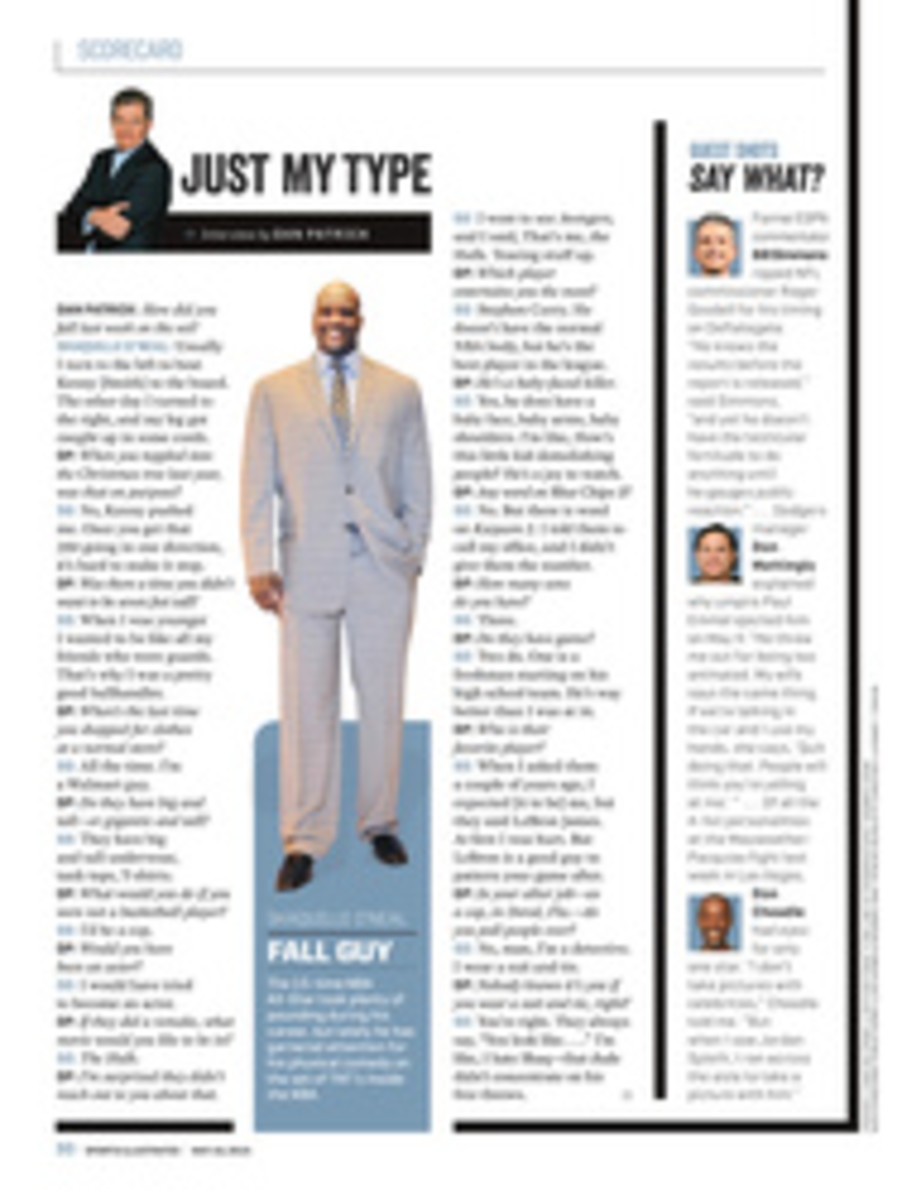
That Guy Is Everywhere!
1. DOWN LOW
Griffin spends more time in post-ups than in any other type of play, according to Synergy Sports. He can spin and explode to the basket in search of a high-percentage look or a foul; he can turn to face and attempt a short jumper; or he can find the open man after drawing a double team. L.A.'s spotup shooters—and their defenders—must remain vigilant, as Griffin is fully capable of whipping a one-handed crosscourt pass from the block. He is also a master at drawing the defense toward him before flipping an alley-oop to center DeAndre Jordan, whether the pass originates from inside the key or along the baseline. All told, Griffin's assists led to 58 of Jordan's league-high 252 dunks this season, per NBA.com/stats.
2. FROM THE ELBOW
Early in Griffin's career most of his offense came from within 10 feet. He set about expanding his range so that he would be less predictable and gain more room to operate. This season Griffin touched the ball at the elbow 12.0 times per game, ranking second only to Marc Gasol. He used those touches to launch the most long twos of his career (37.8% of his total attempts), connecting at his highest rate (40.4%). With defenses forced to respect his improved jumper, Griffin was able to penetrate into the paint more easily, and play the drive-and-kick game with floor-spacers Redick and forward Matt Barnes. Perimeter proficiency played a huge part in L.A.'s proficient offense, which ranked third in both three-pointers made and three-point percentage.
3. NEAR THE ARC
Griffin lacks the range to be a true stretch four, but he's still effective when he's roaming the arc thanks to his activity level and quality decision making. It's no accident that Griffin touched the ball 81.9 times per game in the regular season, tops among non--point guards. Lots of good things happen when he's involved. Griffin's pick-and-rolls with Paul are well-known for their deadliness, but L.A. employs another go-to action on the perimeter that doesn't make the highlight reels. The Clippers like to put Griffin and Redick into a two-man game that begins with a dribble handoff. Griffin transitions quickly into setting a screen, forcing the defense to pick its poison: contest Redick's shot or stay home on Griffin, who can pop to space or dive to the hoop.
4. IN TRANSITION
Who needs an outlet pass? Griffin is a one-man fast break. He ranked first among all power forwards and centers with 198 transition possessions, despite missing 15 games due to a staph infection. Griffin has the green light to take off whenever he grabs a defensive rebound or forces a turnover; in the playoffs he is leading all players with 48 transition possessions, per Synergy Sports. Opponents must respect his ability to finish, setting up opportunities for him to lay the ball off to trailers or to find shooters spotting up for clean looks. While the sight of a big man dribbling in the open court makes some coaches squeamish, Griffin generated 1.2 points per possession in transition in the regular season, which earns him a new label: point power forward.
[The following text appears within a diagram. Please see hardcopy or PDF for actual diagram.]
1
2
3
4
FOUR PHOTOS
Photographs by John W. McDonough for Sports Illustrated
DIAGRAM

